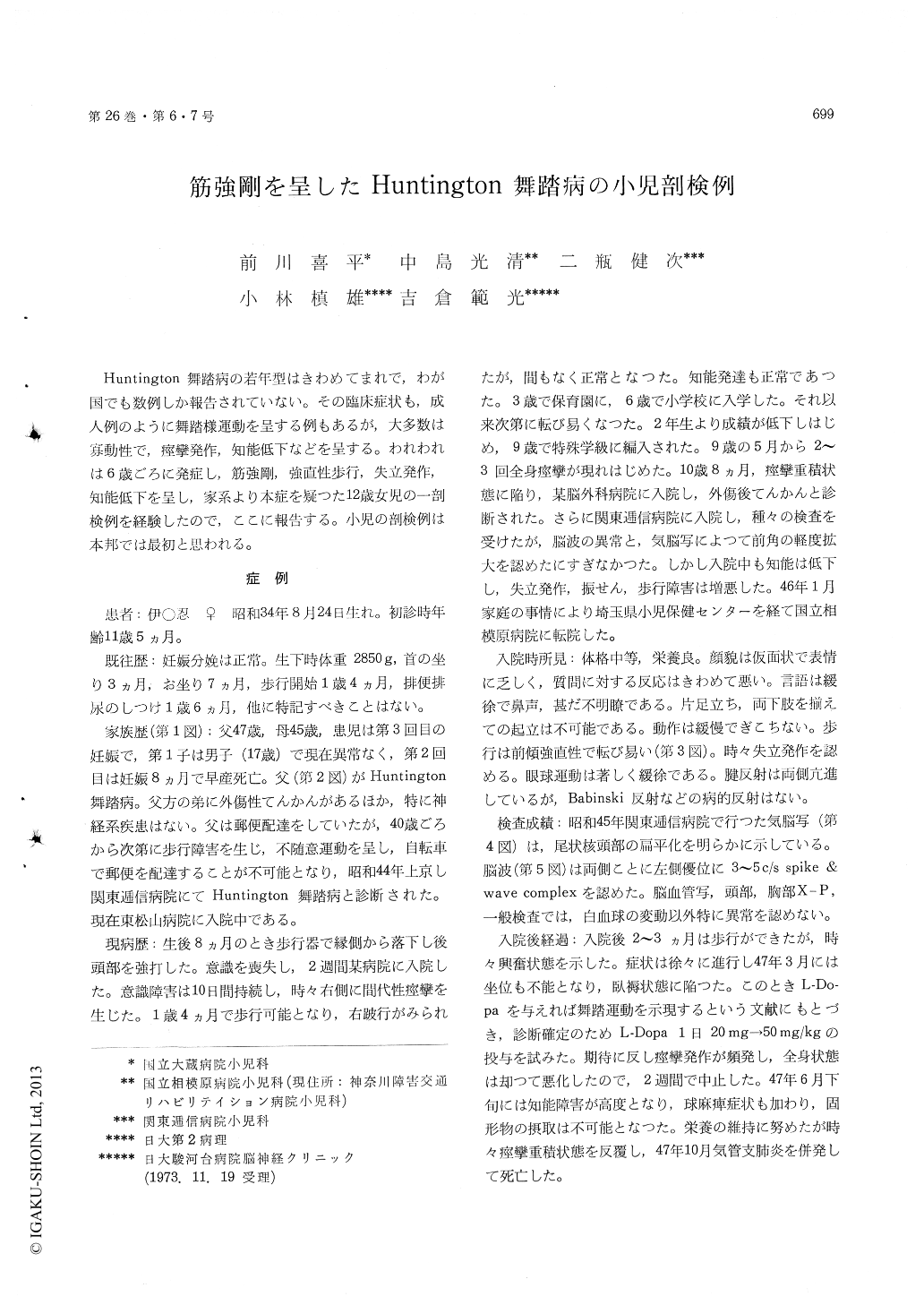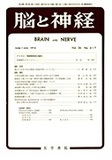Japanese
English
- 有料閲覧
- Abstract 文献概要
- 1ページ目 Look Inside
Huntington舞踏病の若年型はきわめてまれで,わが国でも数例しか報告されていない。その臨床症状も,成人例のように舞踏様運動を呈する例もあるが,大多数は寡動性で,痙攣発作,知能低下などを呈する。われわれは6歳ごろに発症し,筋強剛,強直性歩行,失立発作,知能低下を呈し,家系より本症を疑った12歳女児の一剖検例を経験したので,ここに報告する。小児の剖検例は本邦では最初と思われる。
A 12-year-old Japanese girl was admitted to our hospital with the complaints of muscle rigidity, clumsy rigid gait, akinetic seizure, slurred speech and mental retardation. Her brother, 17 years old, and mother, 45 years old, are healthy, but father has been suffering from Huntington's chorea. The pa-tient was born at full term of uncomplicated labor following a normal pregnancy, weighing 2850 gm at birth. Despite the head trauma got at the age of 8 months, her growth and development were normal, and had been in good health until the age of 6 years, when she was noted to be clumsy and to stumble frequently. At the age of 7 years, she entered primary school. During the following 3 years her school performance became gradually worse and she was transferred to a special class at the age of 9 years.
Since then she had had generalized convulsions 2 to 3 times a month in spite of anticonvulsive medi-cation. She was transferred to our hospital for further evaluation at the age of 12 years.
Pneumoencephalogram revealed an atrophic head of the caudate nucleus. Bilateral 3-5 c/s spike & wave complex were found on EEG examination. During the following one year, she often fell into prolonged generalized convulsions, and muscle rigidity, mental deterioration and motor disabilites became more marked. She died with bron-chopneumonia at the age of 13 years and one month old.
The brain weighed 960 gm. Convolutions ap-pared somewhat atrophic. The ventricular system mildly dilated and the caudate nuclei were reduced in size. Changes and loss of nerve cells in the putamen and caudate nucleus, especially of smaller cells ; conspicuous change and reduction of number of neurons with marked gliosis in the Sommer sector ; and severe degeneration and loss of nerve cells in the cerebral cortex, especially in layers 3 to 5 of the parietal and occipital lobes, charact-erize the pathological features which roughly tally with the symptomatology of the case.

Copyright © 1974, Igaku-Shoin Ltd. All rights reserved.


